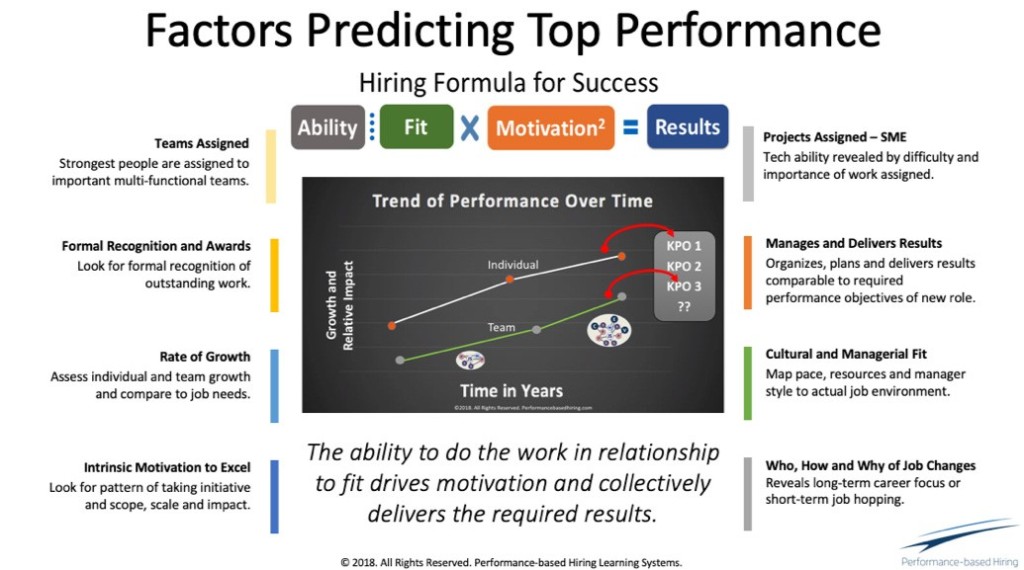Out-yelling Hiring Managers Doesn’t Work – Out-facting Them with These 8 Points Does
I learned long ago you couldn’t “out-yell” a hiring manager who claimed your perfect candidate was ill-equipped to handle the role. But you could “out-fact” the person. The story went something like this:
I was working as a contingency recruiter and was told my candidate for a cost manager spot would be offered the job after meeting the CFO for a short “get-to-know-you” session. This meeting went badly, lasting less than 10 minutes, with the CFO concluding, “the guy is too soft to work with the tough manufacturing guys in our company.”
When I told the CFO that this same person was asked to lead the worldwide implementation of an advanced cost system for a major automotive manufacturing company after successfully installing the system at their biggest U.S. plant, he relented. After meeting the candidate again and conducting a thorough interview, he realized he made a mistake by relying too much on first impressions and how less-than-assertive the person was in the interview.
This was the genesis of the Performance-based Hiring recruiting and interviewing process I advocate. At its core is the principle that evidence of past performance doing comparable work needs to be the criteria used to judge competency, not first impressions, presentation skills, personality, academic background, depth of skills or an ability to correctly answer trick questions. The graphic illustrates the type of evidence we have found best predicts on-the-job success.
Getting this evidence requires first defining the job as a series of key performance objectives (KPOs) and during the interview asking candidates to give detailed examples of major comparable accomplishments. This approach provides the interviewer the information needed to plot the person’s team and individual growth over time and assess each of the key factors in the Hiring Formula for Success.
Here’s a quick summary of each of the factors and why they’re strong predictors of the person’s likely performance in the new role.
1. Teams Assigned:
The most talented people are repeatedly assigned to important, multi-functional teams. Confidence increases if these same patterns exist at different companies and with different people and if the teams are growing in terms of scope and importance.
2. Projects Assigned:
Managers traditionally assign their best people to the most important or difficult projects or they’re given stretch assignments. Why the person was assigned to each team reveals the candidate’s strengths.
3. Formal Recognition:
It’s important to ask candidates about any bonuses, awards, promotions or congratulatory letters they have received. This could be from customers, managers or company executives. The best people tend to be publicly recognized for outstanding work.
4. Manages and Delivers Results:
A performance mindset is essential. You’ll figure this out by asking about specific results and metrics for each accomplishment and finding out how the plan was put together and how it was achieved.
5. Rate of Growth:
An upward team and individual trend is very positive. Flattening of the trend line is fine as long as the person is highly motivated to continue doing similar work at outstanding quality.
6. Cultural and Managerial Fit:
The rate of change of company growth and its level of sophistication is a good proxy for cultural fit. If the hiring manager is extreme in some way – micro or 100% hands off – find out if the candidate has had success working with these types of managers. If not, you have a potential problem brewing.
7. Job Fit:
Being able to do something is not the same as being motivated to do it. A person’s intrinsic motivation to excel is a key driver of performance. You can determine this by getting multiple examples of initiative for each major accomplishment and compare the pattern to the critical job requirements. Lack of job fit should be the primary reason a candidate should be excluded from consideration.
8. Job Changing Criteria:
Ask people why they changed jobs and if the purpose was achieved at the next company. Too many candidates overvalue the short-term benefits of a job change in comparison to the career growth opportunity. While no one admits to this, the best people actually achieve the purpose of the change and everyone else makes excuses as to why the change didn’t work out.
Except for the fit factors, candidates don’t need to be exceptional on every other factor in order to be exceptional employees. Lack of job, cultural or managerial fit is typically the cause of underperformance, dissatisfaction and turnover.
Bottomline: Whenever a hiring manager excludes a good person or attempts to hire someone for the wrong reasons, recruiters need to provide evidence to change their mind. How you present this evidence, though, is important. “Out-yelling” won’t work. “Out-facting” will.
* Photo by Jaredd Craig on Unsplash
To receive blog posts like this one straight in your inbox, subscribe to the blog newsletter.
Topics: Recruiting tips Hiring managers
Related articles





